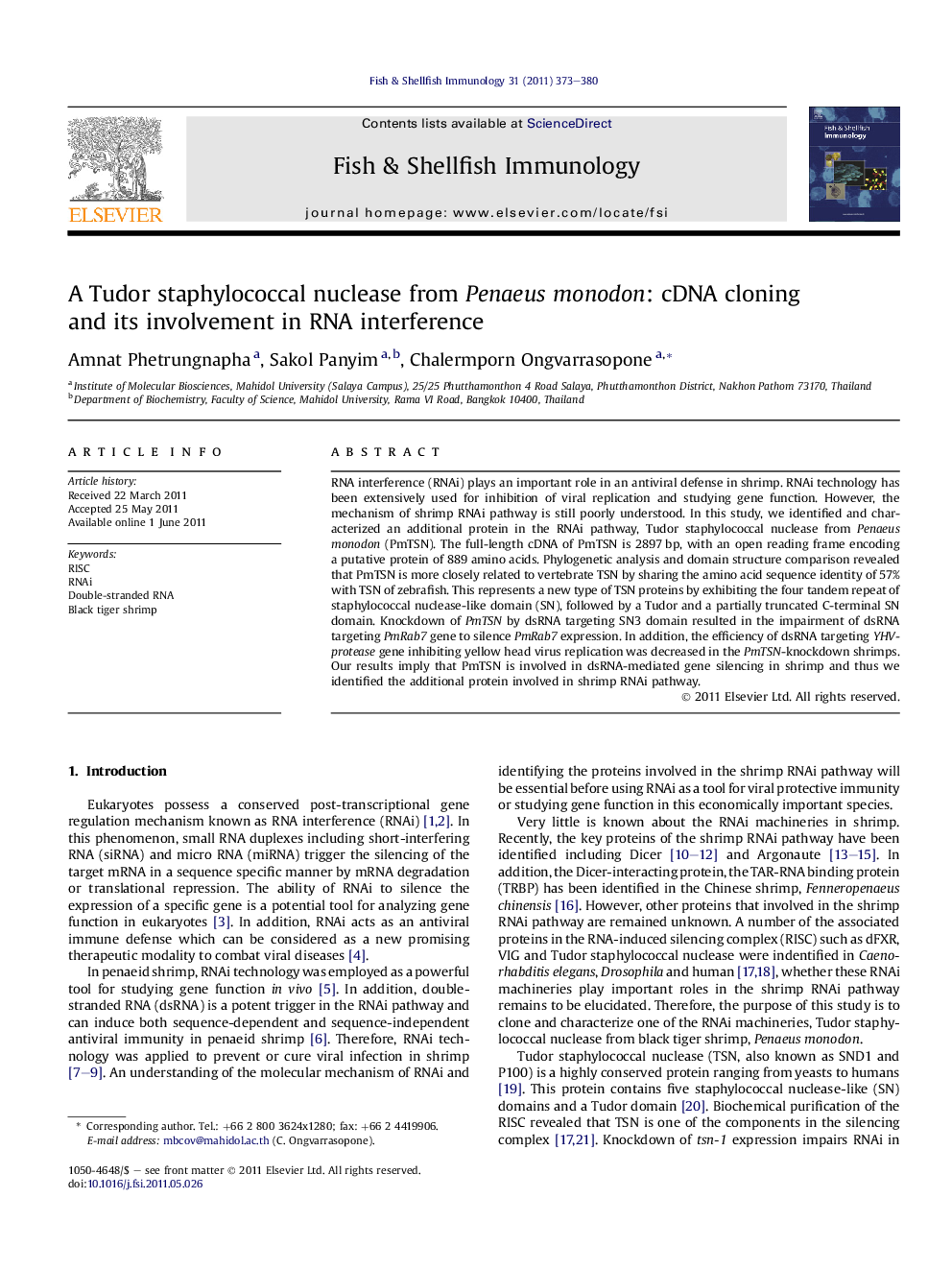| Article ID | Journal | Published Year | Pages | File Type |
|---|---|---|---|---|
| 2432416 | Fish & Shellfish Immunology | 2011 | 8 Pages |
RNA interference (RNAi) plays an important role in an antiviral defense in shrimp. RNAi technology has been extensively used for inhibition of viral replication and studying gene function. However, the mechanism of shrimp RNAi pathway is still poorly understood. In this study, we identified and characterized an additional protein in the RNAi pathway, Tudor staphylococcal nuclease from Penaeus monodon (PmTSN). The full-length cDNA of PmTSN is 2897 bp, with an open reading frame encoding a putative protein of 889 amino acids. Phylogenetic analysis and domain structure comparison revealed that PmTSN is more closely related to vertebrate TSN by sharing the amino acid sequence identity of 57% with TSN of zebrafish. This represents a new type of TSN proteins by exhibiting the four tandem repeat of staphylococcal nuclease-like domain (SN), followed by a Tudor and a partially truncated C-terminal SN domain. Knockdown of PmTSN by dsRNA targeting SN3 domain resulted in the impairment of dsRNA targeting PmRab7 gene to silence PmRab7 expression. In addition, the efficiency of dsRNA targeting YHV-protease gene inhibiting yellow head virus replication was decreased in the PmTSN-knockdown shrimps. Our results imply that PmTSN is involved in dsRNA-mediated gene silencing in shrimp and thus we identified the additional protein involved in shrimp RNAi pathway.
